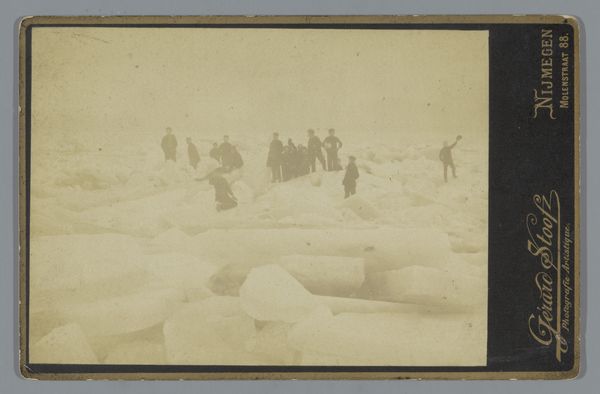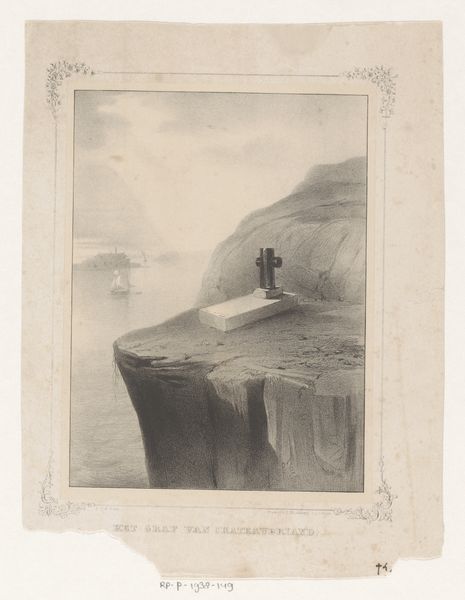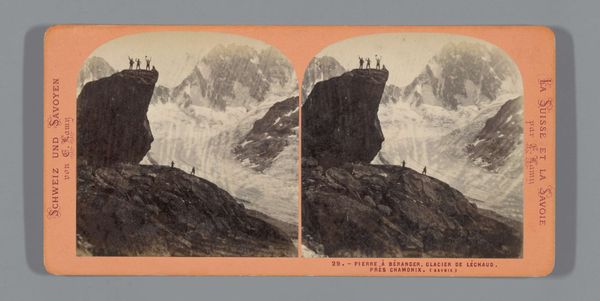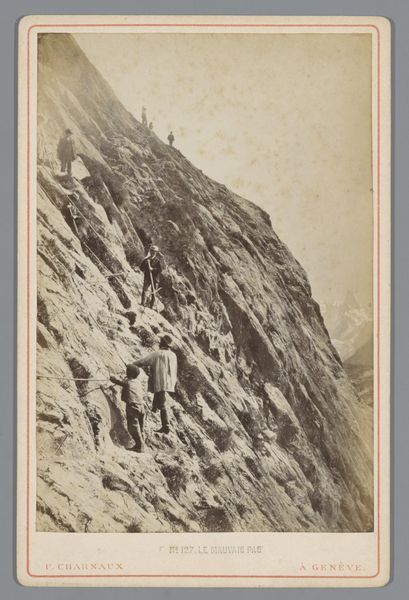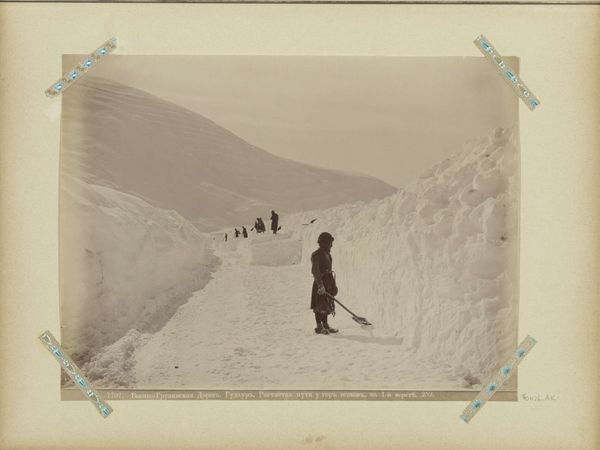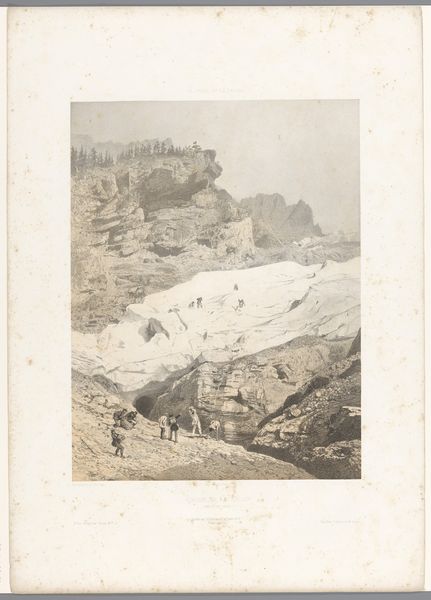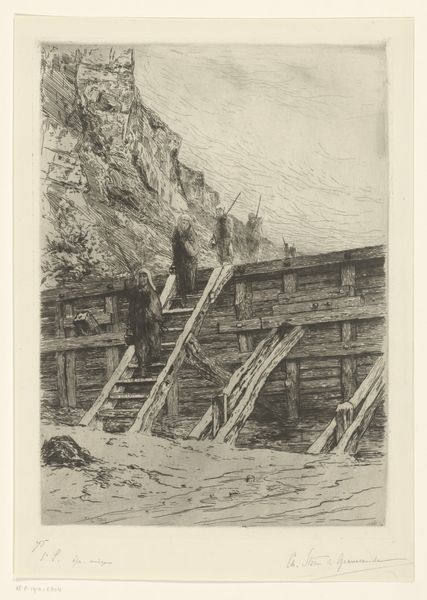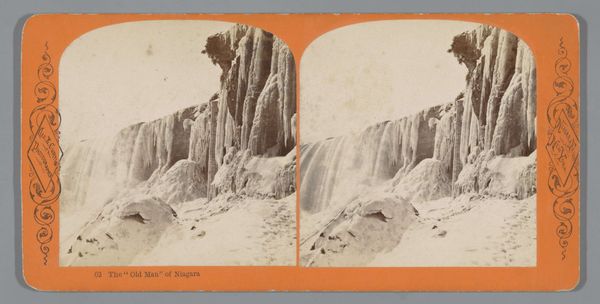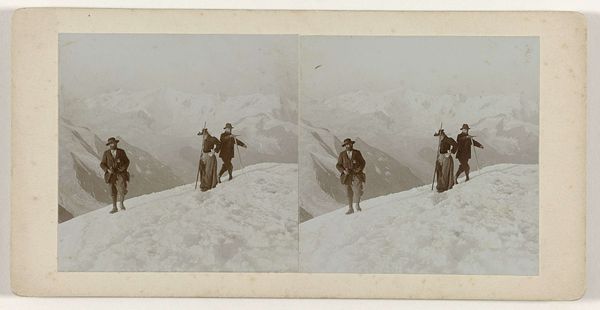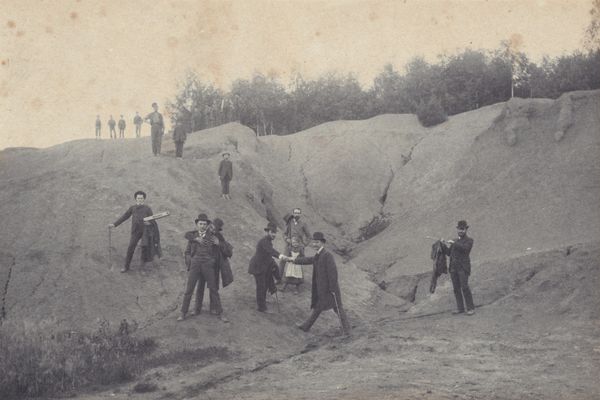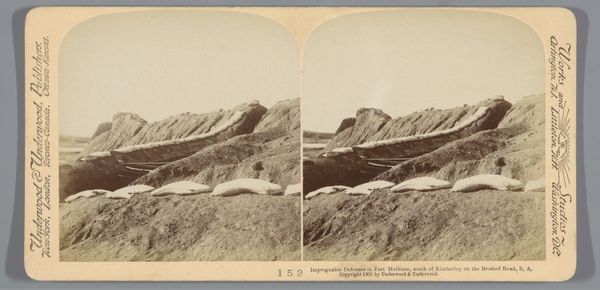
photography, gelatin-silver-print
#
pictorialism
#
landscape
#
photography
#
mountain
#
gelatin-silver-print
Dimensions: height 108 mm, width 164 mm
Copyright: Rijks Museum: Open Domain
Curator: This is a gelatin silver print by Charnaux Frères & Co., dating from between 1870 and 1900. It's titled "Oversteek van een spleet op de route naar de Mont Blanc"—"Crossing a Crevasse on the Route to Mont Blanc." Editor: The immediate impression is stark—a dangerous, almost ethereal landscape of snow and ice. The monochrome tones accentuate the harshness of the environment. Curator: Precisely. Let’s consider the materials. A gelatin silver print speaks to the mass production of imagery that was taking place. The ability to reproduce and distribute these images speaks to leisure, the advent of tourism and mountain climbing as a practice among a certain social class. Editor: I’m also struck by the framing of the climbers. There's a clear hierarchy visualized—a team relying on a labor division to tackle this monumental terrain, very similar to labor relations on industrial sites. Are these individuals part of a privileged group or paid labor, considering this expedition and documentation? Curator: It's a valuable question. We know from other historical documents that these expeditions often involved hired guides and porters, reflecting a complex social dynamic. The photograph, therefore, becomes a record not only of the landscape but also of labor practices connected with it. These photographs could also fuel desires to explore. Editor: Absolutely, there's an element of constructed desire here too. The framing could romanticize adventure for an exclusive audience, downplaying the actual difficulties or class implications. How complicit is the photograph in this selective vision of landscape and labour? Curator: Good question. The technical precision achieved in a gelatin silver print created a form of authenticity and objective truth. However, as you point out, that supposed “truth” inevitably gets filtered through socio-political contexts. We may not know if these men volunteered or not, but there is a sense that photography created a different sort of landscape aesthetic compared to traditional painting. Editor: Ultimately, examining this photograph offers a portal into the intricate relationships between human labor, photographic practices, social inequality and the lure of the sublime landscape. The photograph exists beyond its aesthetic value. Curator: Agreed. The focus on production and labor here re-contextualizes "Oversteek van een spleet op de route naar de Mont Blanc".
Comments
No comments
Be the first to comment and join the conversation on the ultimate creative platform.

